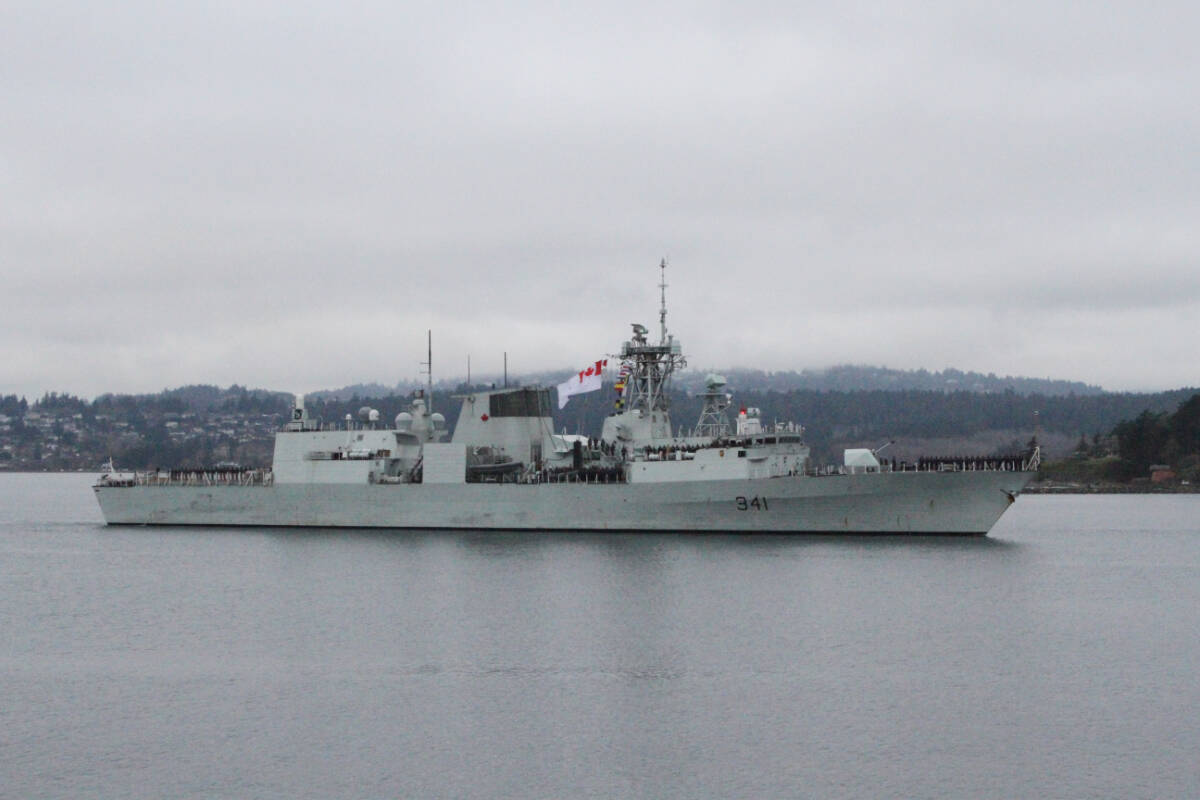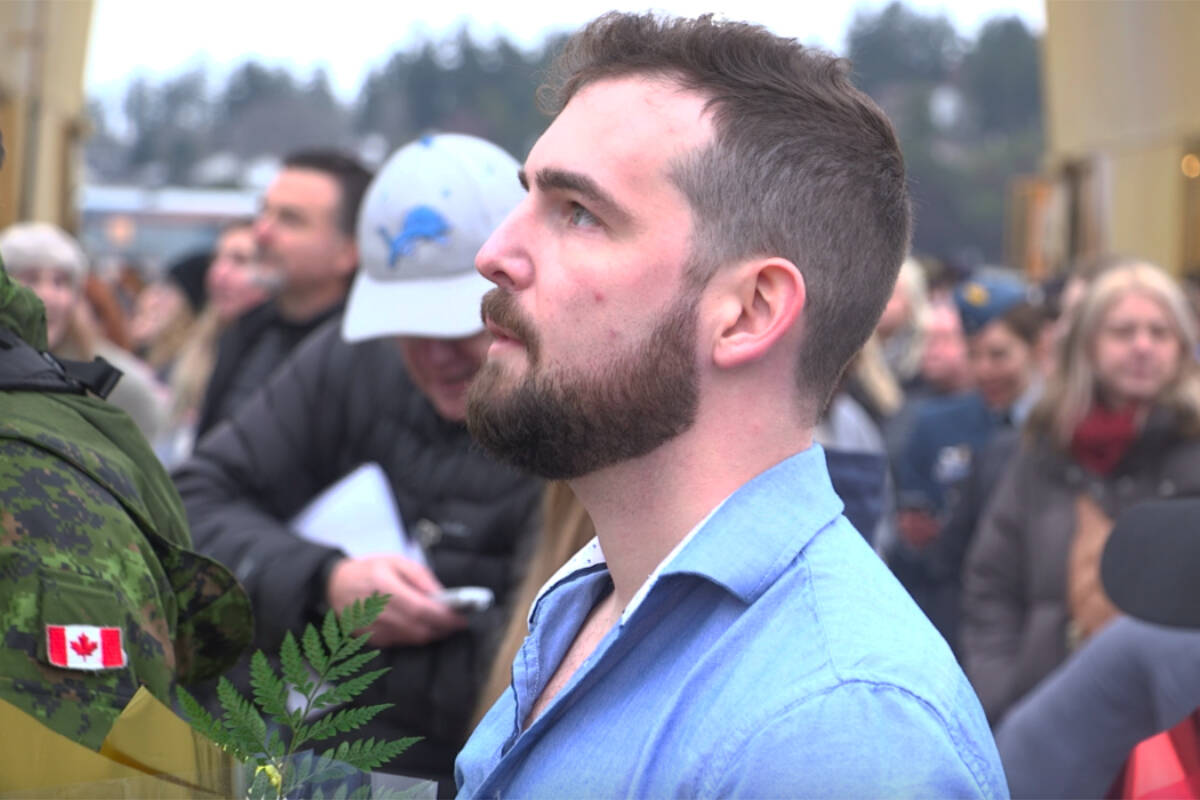Coming home for the holidays is always special, especially for the Canadians on the HMCS Ottawa and HMCS Vancouver.
After four months away, the two vessels, along with Motor Vessel (MV) Asterix, returned to B.C.’s CFB Esquimalt on Dec. 18. Awaiting their arrival were friends, family, warm messages, happy tears, hugs and even Christmas carols to help get them in the holiday spirit.
“It was long, but it was short because of the people who I have, because of the crew I have, because of the captain who I had, he made it very fun, but it was long enough for me to miss my husband. Now I’m super happy to see my husband,” said MS Seunghee Ryu, a cook who got the first kiss with her husband Adam Bestward after stepping off of HMCS Ottawa. “I’m really happy to see her, it’s been a long four months,” added Bestward.
While the couple doesn’t have any immediate plans besides going home, Ryu said, “babies” are their next big step. “We got married two years ago, I think it’s time. The honeymoon is coming in April, and there’s soon-to-be babies coming,” said Ryu.
The vessels departed their home port in Esquimalt for the Indo-Pacific region in August. This included going to Japan, Korea, and other surrounding areas to uphold Canadian relations. According to Cmdr. Christopher Robinson of the Maritimes Forces Pacific, missions were as “diverse as enforcing the United Nations (UN) Security Council resolutions off of North Korea, through to protecting the right of innocent passage in international waters.”
READ MORE: CFB Esquimalt sailor shares snapshot of his life on board HMCS Ottawa
Across the three vessels, 650 sailors were onboard. Asterix served as a duty tanker, filling up allied and Canadian ships in the area. Robinson called it a “floating gas station.” Then the two frigates split north and south. Vancouver went up around the Korean Peninsula and worked with the UN. While Ottawa went farther south and worked by the Taiwan Strait transits. Toward the end of the vessels’ journeys, the ships came together to do an exercise with the Japan Maritime Self-Defense Force, and then the three of them converged together and came back across to Canada.
Sam Patchell, who was commanding officer for the vessels’ deployment, believes the mission was highly successful.
“The world was very aware of Canada’s presence over there. Honestly, at the end of the day, I think it’s successful because I have a bunch of smiling faces, a bunch of happy, healthy people who are home after serving Canada.”
READ MORE: Greater Victoria schools receive big donations from construction group
CFB EsquimaltRoyal Canadian Navy


